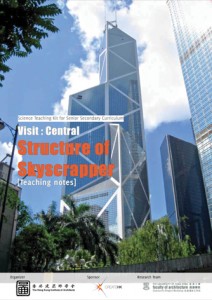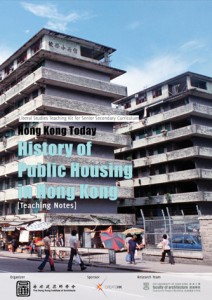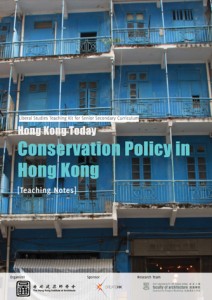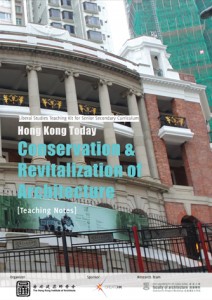Do you remember things you studied in secondary school?

 Now, secondary school students studying Physics and forces can understand the hanger structure supporting the floors below the external wall of Hong Kong Bank Headquarters;; Liberal Studies students can appreciate Chinese culture by comparing the Sam Tung Uk walled village in Hong Kong with Beijing courtyard homes; Visual Arts students can start to appreciate, and even criticise, buildings in terms of form and space, light and shadows, as well as proportions, and through design and technology subjects, students are designing a village school with knowledge about the historical development of schools in Hong Kong. These are just a few of the knowledge possibilities which students come into contact with in their daily lives, through the integration of architecture into existing subjects.
Now, secondary school students studying Physics and forces can understand the hanger structure supporting the floors below the external wall of Hong Kong Bank Headquarters;; Liberal Studies students can appreciate Chinese culture by comparing the Sam Tung Uk walled village in Hong Kong with Beijing courtyard homes; Visual Arts students can start to appreciate, and even criticise, buildings in terms of form and space, light and shadows, as well as proportions, and through design and technology subjects, students are designing a village school with knowledge about the historical development of schools in Hong Kong. These are just a few of the knowledge possibilities which students come into contact with in their daily lives, through the integration of architecture into existing subjects.
These examples illustrate the objective of a secondary school teaching kit entitled “Architecture in Hong Kong”, designed to develop knowledge and skills through architecture in order to appreciate different cultural contexts and foster creativity and critical thinking skills.
From a global perspective, this is the purpose of the UIA (Internal Union of Architects) built environment education programme “Architecture and Children” in which HKIA has participated. This programme is not designed to train everyone to become architects, but to acquire certain knowledge to know the features, constraints and process involved with the making of our built environment i.e.“So that, as adult citizens, users, clients and decision-makers, they may take an active part in shaping the world they live in, embracing both heritage and innovation in the creation of communities which provide a healthy and harmonious quality of life for all.”
Architecture will not be presented as a separate subject in the secondary school curriculum, but will be teaching aids to explain topics in various areas like visual arts and music, science, design and technology as well as liberal studies. It is precisely this interdisciplinary nature of architecture that agrees with the vision of Education Bureau to encourage crossing the boundaries of subjects.

 The project is led by HKIA, with funding from the government’s CreateSmart Initiative. The Community Project Workshop of the Faculty of Architecture provides research support for the project which commenced last summer. As a user-based project, there have also been continuous consultations with the curriculum development officers of Education Bureau, secondary school teachers, principals and students since the project commenced.
The project is led by HKIA, with funding from the government’s CreateSmart Initiative. The Community Project Workshop of the Faculty of Architecture provides research support for the project which commenced last summer. As a user-based project, there have also been continuous consultations with the curriculum development officers of Education Bureau, secondary school teachers, principals and students since the project commenced.
Officially launched in October 2012, the project covers the four areas of Visual Arts, Science and Liberal Studies, as well as Design and Technology, each equipped with ten topics. The topics are detailed with knowledge and concepts, plus suggestions for working/study methods bilingual student documents. Some subjects are presented in PowerPoint with teaching/learning notes. Others are based on videos or guided tours. For the last part, HKIA has set up a team of architects, from young to senior, to lead teachers in experiencing architectural tours.
More than 20 talks/seminars have been organised through to 2013 to promote this teaching kit covering general briefings to particular topics on architecture such as Universal design, Zen aesthetics in Japanese gardens, Modernism in Hong Kong, Chinese calligraphy and architecture etc. Although the project is still in the launch phase, , positive comments and feedback have already been received from secondary school teachers and these are greatly appreciated by HKIA and the working collaborative parties.
Wong Wah Sang is Associate Professor, Department of Architecture












